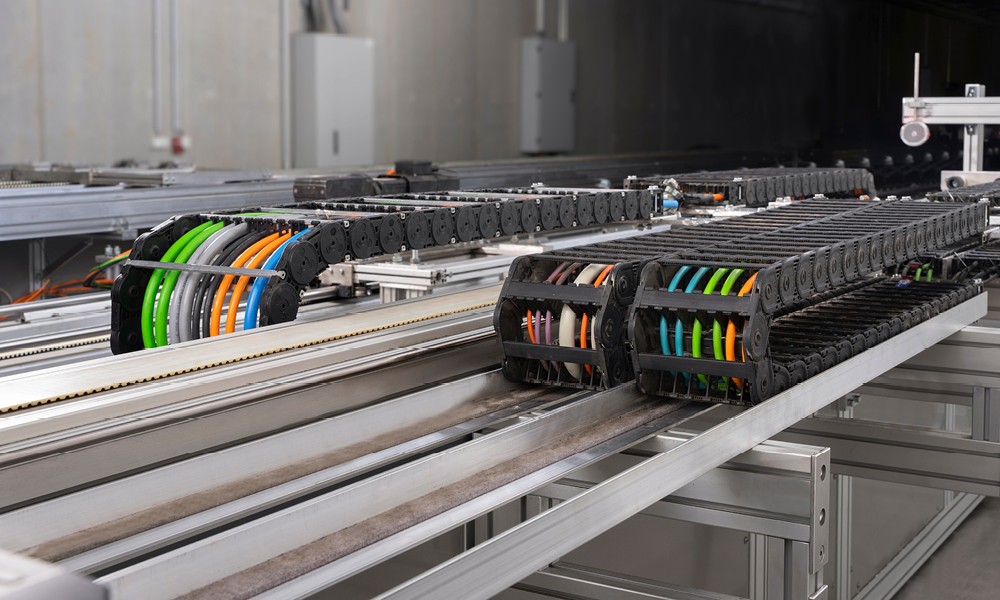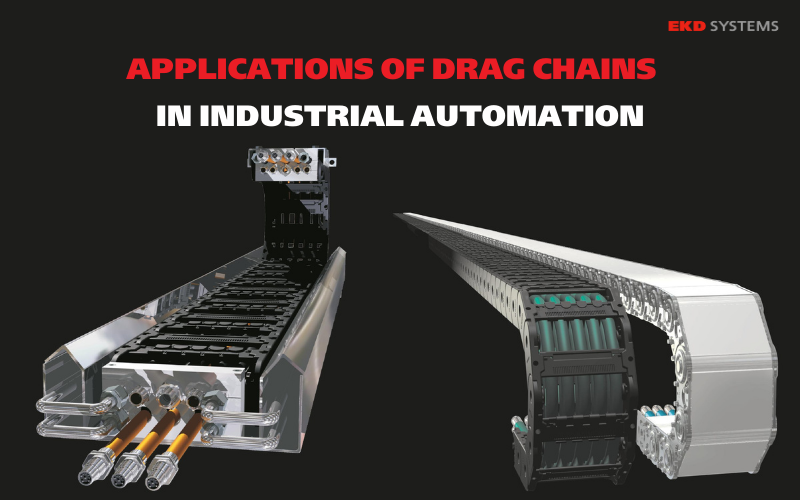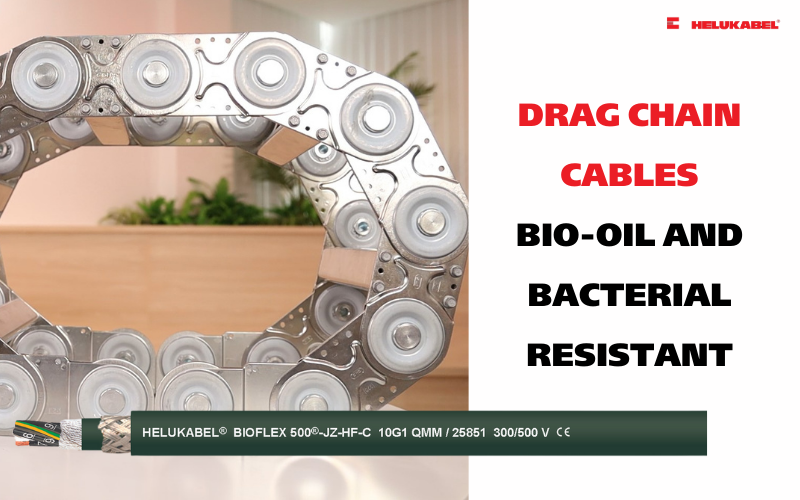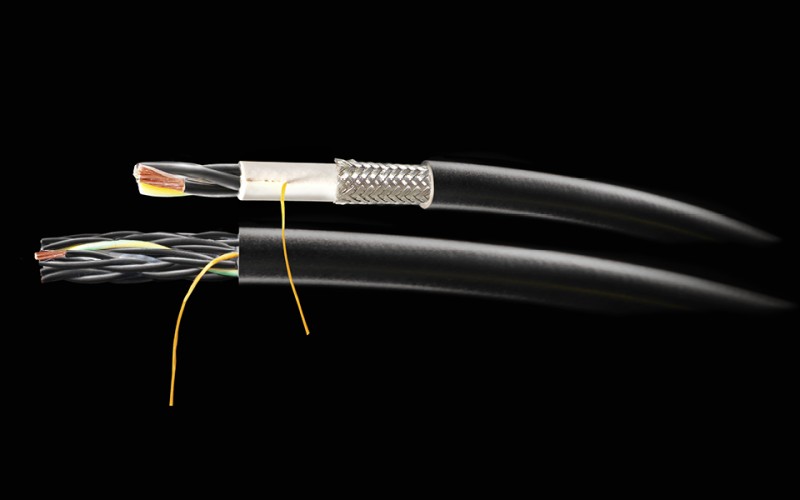Put to the Ultimate Test – Part 3: Drag Chain Tests
During the development of our cables and wires, we vigorously test each product in our testing laboratories. In the third part of our series, we’ll introduce you to drag chain tests.

Energy chains – also known as drag chains – are ideal for guiding and protecting electrical, hydraulic and pneumatic cables in moving machinery and equipment. They are used in situations where machine components are moving back and forth – for example in lifts, machine tools and in the control stations of high-bay warehouses. The guide ensures that the smallest permissible bending radius for the cables is not exceeded, thereby avoiding damage.
Drag chain cables are constantly moving – often non-stop around the clock – making fast accelerations, tight bending radii and continuous abrasion ongoing challenges. There are many applications where drag chains have to withstand millions of bending cycles undamaged, and at the same time be resilient to oil, heat and chemicals. Core insulation and sheathing materials of high quality are essential here to reduce the risk of abrasive wear which might damage the cables and lead to expensive machine outages.
>>See more: Drag chains - Solutions for motion applications
The HELUKABEL portfolio contains special drag chain cables for moving applications in energy chains. To ensure that they meet the stringent demands of day-to-day use, we subject them to extensive testing in our testing laboratory in Windsbach, Germany. We have a variety of drag chain test facilities with traverse paths ranging from 0.9 to 40 metres. With accelerations of up to 50 m/s², velocities of up to 10 m/s and different chain radii, we can realistically simulate diverse operating conditions. The aim of these tests is to prove that the copper wires, core insulations, stranding and outer sheathing withstand constantly changing bending stresses undamaged and therefore meet our high quality standards.
Only cables that fulfil every one of our strict requirements find their way into our product portfolio. Hence, our drag chain cables are HELUKABEL’s contribution to ensuring that plant and machinery are able to operate both cost-effectively and efficiently over the long term, even in harsh conditions.
>>>Find out more: A pplications of drag chain in industrial automation
Ask the Expert

Günter Meyer is Head of Dynamic Testing at the HELUKABEL plant in Windsbach
What do you have to pay particular attention to when choosing a drag chain cable?
There are several criteria: firstly, the copper wires should be finely stranded, i.e., are conductor class 5. The individual conductors should be stranded with the smallest possible lay length to optimise flexibility. The design of the sheathing and insulating materials must take into account the required movements as well as the relevant ambient conditions. It is also recommended keeping the number of cores to a minimum: if the number of cores increases, a special stranding process is required. This increases the diameter of the cable which might lead to space problems in the chain. Furthermore, drag chain cables must be designed to be as light as possible. The energy chain has to carry its own weight as well as that of the cables inside it. The lower the overall weight, the greater the dynamic performance and hence the less the energy needed to get the system moving.
>>Discover more: 6 key factos affecting the design of drag chain
How are the cables aligned in a drag chain?
For optimal alignment, it is important to define beforehand precisely which cables and other components such as pneumatic and hydraulic hoses will be used and to select the energy chain accordingly. Cables and hoses should be loosely placed beside each other in the chambers of the drag chain and, ideally, kept apart from one other using dividers. Maintaining a specified clearance between the cable and divider ensures that the cables can move freely. Symmetrical weight distribution in the chain helps to ensure smooth operation. In addition, the cables in each section should all have the same sheathing material to avoid unnecessary abrasion.



